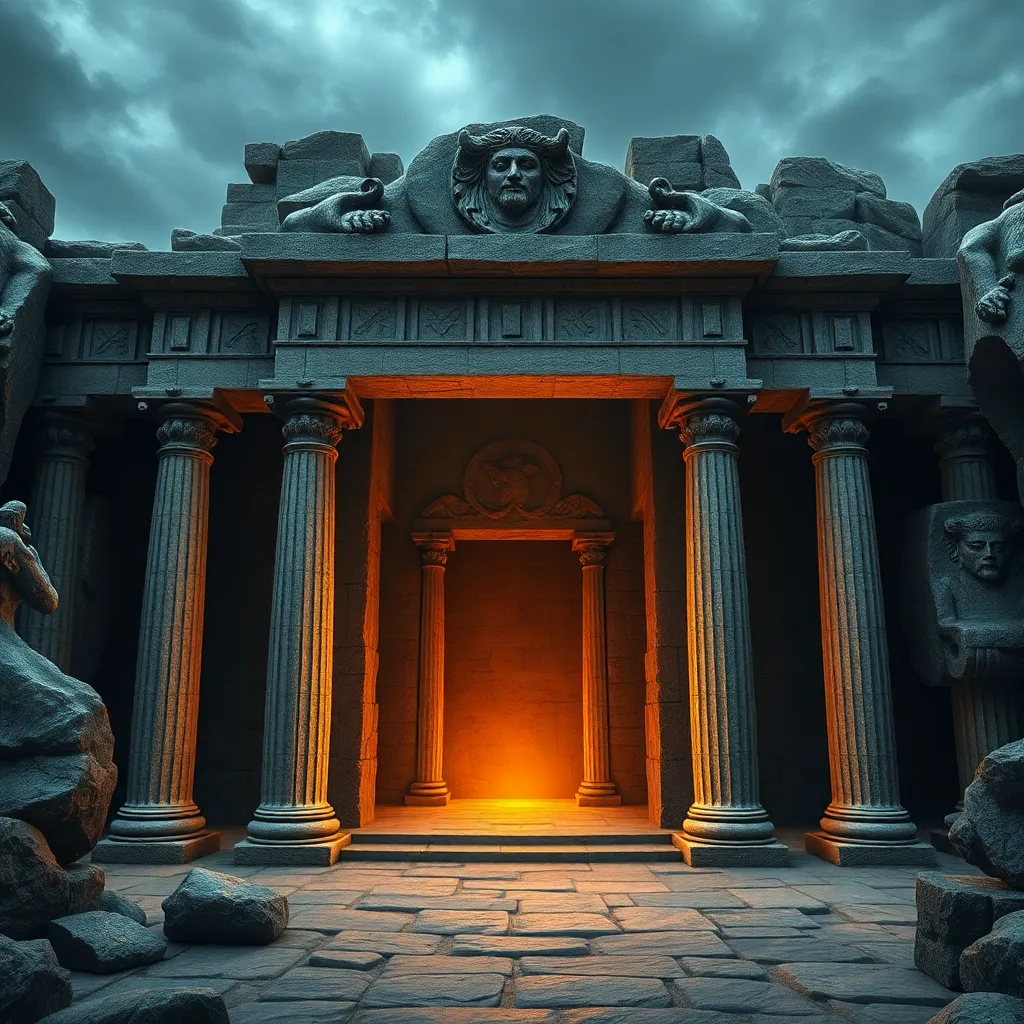The Seven Gates of the Underworld: Myths and Their Meanings
I. Introduction
The Underworld is a prominent theme in various mythologies, serving as a realm that is both feared and revered. It is often depicted as the final resting place for souls, a mysterious domain where the living dare not tread. Different cultures have their unique interpretations of this enigmatic place, but a common thread among them is the existence of gates or thresholds that souls must cross to enter. The concept of the Seven Gates serves as a symbolic framework, representing the stages of transition from life to death and the challenges faced along the way. This article aims to explore the myths surrounding these gates, their meanings, and how they reflect human beliefs about mortality.
II. The Concept of the Underworld in Mythology
The Underworld, often referred to by different names across cultures, is a significant concept in mythology. It represents the afterlife, where souls go after death. This realm is not only a place of punishment or reward but also a reflection of cultural beliefs about existence and the afterlife.
In examining different cultures, we can see various interpretations of the Underworld:
- Greek Mythology: The Underworld, ruled by Hades, is divided into regions such as Elysium, the Asphodel Meadows, and Tartarus.
- Egyptian Mythology: The Duat is a complex realm where the dead face judgment from Osiris and navigate a series of trials.
- Mesopotamian Mythology: The Underworld, known as Kur, is a dark and dreary place ruled by Ereshkigal, where souls exist in a shadowy existence.
The role of the Underworld in these mythologies is crucial for understanding life and death. It reflects the values and fears of each culture, offering insights into how they perceived mortality and the afterlife.
III. The Seven Gates: A Symbolic Framework
The Seven Gates of the Underworld serve as a powerful metaphor for the journey of the soul. Each gate represents a stage in the transition from life to death, and the trials faced at these gates symbolize the challenges of existence. The historical origins of the Seven Gates concept can be traced back to various ancient texts and oral traditions, where the number seven often signifies completeness and transformation.
Common themes associated with each gate include:
- Transition and passage
- Judgment and guardianship
- Challenges and trials
- Transformation and rebirth
IV. The First Gate: Entrance to the Unknown
The first gate acts as the threshold to the Underworld, symbolizing the entry into the unknown. In many myths, it is portrayed as a dark passage that souls must traverse to reach the realm of the dead.
This gate carries deep symbolism related to the fear of death and the mystery of what lies beyond. It represents a significant transition, marking the end of earthly existence. Cultural interpretations of this gate often emphasize the theme of transformation, where the soul must leave behind the known world to embark on a new journey.
V. The Second Gate: Guardians of the Soul
As souls approach the second gate, they encounter guardians who serve as protectors and judges. These gatekeepers play crucial roles in mythological narratives, ensuring that only the worthy may pass.
The symbolism of these guardians can be diverse:
- Judgment: They assess the deeds of the souls, determining their fate in the afterlife.
- Protection: They safeguard the entrance to the Underworld, preventing malevolent spirits from entering.
Examples of notable guardians include:
- Charon: The ferryman of Hades in Greek mythology, who transports souls across the River Styx.
- Anubis: The Egyptian god responsible for mummification and the protection of the dead, guiding souls through the Duat.
VI. The Third Gate: Trials and Tribulations
The journey through the third gate is characterized by trials that test the souls’ worthiness. These challenges are reflective of the struggles faced in life, serving as a metaphor for growth and resilience.
Many myths depict these trials, emphasizing the importance of overcoming obstacles as a part of the spiritual journey:
- In Greek mythology, souls may face the judgment of Minos, who assesses their actions in life.
- In Egyptian belief, the Weighing of the Heart ceremony determines the soul’s purity against the feather of Ma’at.
The significance of these challenges lies in their ability to transform the soul, making them stronger and more prepared for the afterlife.
VII. The Fourth to Seventh Gates: Layers of Meaning
The remaining gates each offer unique characteristics and contribute to the overall mythological narrative. Here, we explore the layers of meaning associated with the fourth to seventh gates:
- The Fourth Gate: Represents the acceptance of one’s past, allowing the soul to confront its actions and decisions.
- The Fifth Gate: Symbolizes the purification process, where the soul sheds its earthly attachments.
- The Sixth Gate: Denotes the trials of the mind, where the soul confronts its fears and doubts.
- The Seventh Gate: Acts as the final passage, leading to rebirth or eternal rest, depending on the choices made by the soul.
Across cultures, commonalities can be found in the themes of judgment, transformation, and acceptance, while differences reflect the unique beliefs and values of each society.
VIII. Conclusion
The Seven Gates of the Underworld hold enduring significance in understanding human beliefs about death and the afterlife. They serve as a poignant reminder of the universal quest for meaning in the face of mortality.
These myths not only provide insight into ancient cultures but also resonate in contemporary society, where the themes of transition and transformation remain relevant. The intersection of myth and meaning continues to shape our understanding of life, death, and what may lie beyond.




